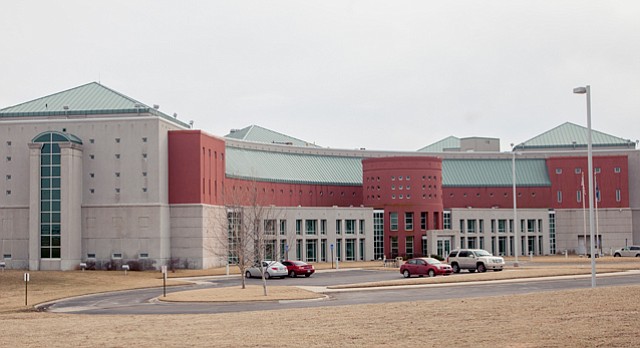April 11, 2018. Lawrence Journal-World.
Rising jail populations among smaller jurisdictions such as Douglas County are contributing to mass incarceration in the United States, a spokeswoman for a national criminal justice policy organization said at a gathering Wednesday night.
Jasmine Heiss, director of outreach for In Our Backyards of the Vera Institute of Justice, spoke at Lawrence’s Carnegie Building at the invitation of Justice Matters, Kansas Appleseed and the University of Kansas’ Department of African and African-American Studies. Heiss said part of her role at the Vera Institute is advising municipalities like Douglas County on how to reduce the number of people they jail.
Justice Matters and Kansas Appleseed both oppose the half-cent sales tax that’s been proposed as a funding source for an expansion of the Douglas County Jail. If voters approve it in this spring’s referendum, the tax would fund the $44 million jail expansion as well as an $11 million behavioral health campus, and it would provide $5.1 million annually for expanded behavioral health services.
While incarceration rates in the nation’s largest cities are decreasing, Heiss said, smaller jurisdictions like Douglas County have seen increases in their jail populations over the past 45 years. Heiss said one of her group’s goals is to combat that trend.
Douglas County’s incarceration rate is lower than state and national averages, Heiss acknowledged.
According to Douglas County Undersheriff Gary Bunting, the county currently incarcerates about 1.85 people per 1,000 residents, and the Prison Policy Initiative think tank has reported that in 2016, the national incarceration rate was 6.93 and the statewide rate was 6.96.
Nonetheless, Heiss said the county was trending in the wrong direction. She added that the jail issue shouldn’t be viewed in isolation, but should be interpreted as part of the national issue of mass incarceration.
“Jails are mass incarceration’s front door,” she said. “You can’t pull individual systems out of the larger problem.”
Heiss argued that evidence from other counties indicated an expanded jail would only be a stopgap measure and wouldn’t solve the underlying problems driving the overcrowding. She said that although the county has been successful in diverting inmates from the jail, it needs to address its overcrowding issue more comprehensively. She said that should include a look at law enforcement contacts that lead to arrests and ways to speed up court procedures so that inmates spend less time behind bars waiting for their cases to be resolved.
The county should also examine why people of color are incarcerated at a much greater rate than their percentage of the county’s population, Heiss said.
“Across the county, they are about 3.5 times as likely to be incarcerated (as) white people,” she said.
Douglas County Jail data shows that in 2016, black inmates accounted for 15.3 percent of the jail’s population and Native Americans made up 5.4 percent. According to the U.S. Census Bureau, blacks make up 4.6 percent of the county’s population and Native Americans make up 2.7 percent.
The money the county would spend on the jail expansion could be used more effectively on programs that would keep people out of jail, such as employment training and mental health and substance abuse programs, Heiss said.
In a phone interview with the Journal-World on Wednesday, Douglas County Commission Chair Nancy Thellman said the proposed half-cent sales tax, if approved, would provide sustainable funding for the additional substance abuse and mental health programing Heiss advocated for.
“More than half the revenue the sales tax would raise would be used for behavioral health,” she said.
However, Thellman rejected the view that mass incarceration was an issue in the county, citing the county’s low incarceration rate when compared to state and national averages.
“It sounds to me as confirmation that referendum opponents are using the national mass incarceration problem to hijack a local jail issue,” she said. “We do not have mass incarceration in Douglas County. It would be great to focus on the needs of Douglas County on this very important issue.”
View original article.






